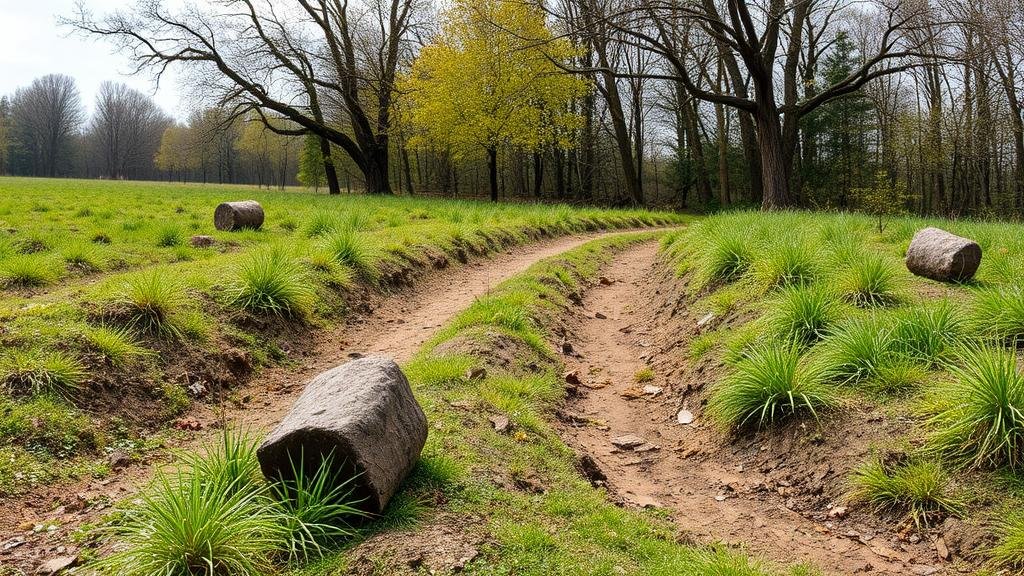Detecting for Signals of Relics Beneath Battlefield Roads and Paths
Detecting for Signals of Relics Beneath Battlefield Roads and Paths
The study of ancient battlefields has long fascinated historians, archaeologists, and the general public alike. As remnants of the past lie beneath our feet–often concealed under layers of earth, asphalt, or cobblestone–significant technological advancements have emerged to help detect these hidden relics. This article delves into the methodologies and tools used to uncover signals of relics beneath roads and paths historically utilized in battle zones, providing insights into the complexities involved in these efforts and the implications for historical preservation.
Historical Context of Battlefield Roads and Paths
Battlefield roads and paths have served not only as conduits for soldiers and supplies but also as sites of significant events in human history. e thoroughfares often bear witness to intense conflict, making them focal points for archaeological surveys. For example, the Battle of Gettysburg in 1863 saw extensive movements along key access routes which have been the subject of numerous archaeological studies.
Understanding the historical significance of these roads is crucial. They often lead to or from strategic locations, command posts, or supply depots, where relics such as weapons, personal items, and even ammunition might be found. As roads have been constructed, expanded, and repurposed over time, many ancient paths have been lost to modern development, underscoring the need for careful detection techniques.
Technologies Used for Detection
The detection of relics beneath road surfaces requires sophisticated technologies and methodologies. Some of the most commonly utilized methods include:
- Ground Penetrating Radar (GPR): A non-invasive technique using radar pulses to image the subsurface, GPR can provide high-resolution images of the structures and objects buried beneath roads. For example, GPR has typically been employed in European battlefields to detect buried fortifications and mass graves.
- Metal Detection: Traditional metal detectors can be used to locate ferrous and non-ferrous metals in disturbed soils and beneath asphalt. r portability makes them advantageous in field surveys. They were notably used during the Battlefields of Normandy studies to uncover remnants of military equipment.
- Magnetometry: This method involves measuring the magnetic field variations in the soil that might indicate the presence of metal objects or disturbances in the earth. Magnetometry has been successfully applied in detecting buried artillery and remains of fortifications across various battlefields.
Challenges in Detecting Relics
Despite the advanced technologies in use, various challenges persist in detecting relics beneath battlefield roads and paths:
- Overburden and Soil Composition: The presence of asphalt, concrete, or differing soil types can impede the effectiveness of detection methods. For example, GPR may struggle with dense materials, resulting in poor subsurface imaging.
- Modern Interference: Nearby utility lines, modern construction debris, and even vehicular traffic can create noise that complicates the detection process, leading to false positives.
To address these issues, archaeologists often advocate for pre-excavation surveys to map out magnetometry readings and GPR results before physical probing begins.
Case Studies: Successes in Detection
Several notable case studies exemplify the success of detection technologies in battlefield locations:
- The Battle of Waterloo: Utilizing GPR and magnetometry, archaeologists were able to identify soldier remains and weaponry in areas previously thought to be disturbed. The non-invasive nature of these technologies provided insights without significant disruption of the site.
- The American Civil War Battlefields: At sites such as Shiloh and Antietam, metal detectors have been employed to recover artifacts that directly correspond with documented military positions, providing richer contextual understanding of the battles fought.
Preservation and Ethical Considerations
The detection and excavation of relics raise important preservation and ethical issues. The relics found are not merely artifacts; they represent the memory of lives lost and a history that needs to be treated with respect. Archaeologists must establish protocols for handling and conserving artifacts while engaging with descendant communities that maintain cultural ties to the heritage.
Also, ethical implications of collecting and displaying these artifacts come into play. Organizations like the Society for Historical Archaeology advocate for best practices in archaeological recovery and adherence to local regulations to ensure that historical narratives are preserved and conveyed accurately.
Concluding Thoughts and Actionable Takeaways
Detecting relics beneath battlefield roads and paths represents a synthesis of technology, history, and ethics. The evolution of detection techniques provides hope for uncovering valuable historical artifacts while mitigating the impact on these critical sites. Archaeologists and historians must remain vigilant and innovative in their methodologies, ensuring the voices of the past are not lost beneath the modern constructs of today’s world.
For those interested in engaging with battlefield archaeology, consider the following actionable takeaways:
- Stay informed about the latest archaeological techniques and technologies that can enhance detection efforts.
- Support ethical standards in archaeological practices, advocating for preservation efforts in archaeological sites.
- Engage with community and educational organizations to promote awareness of local historical sites and their significance.
Through responsibility and careful excavation, we can honor the past while contributing to our collective understanding of history.



